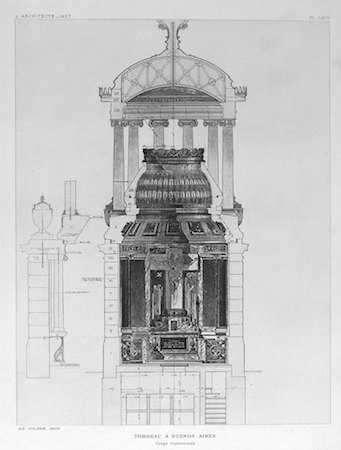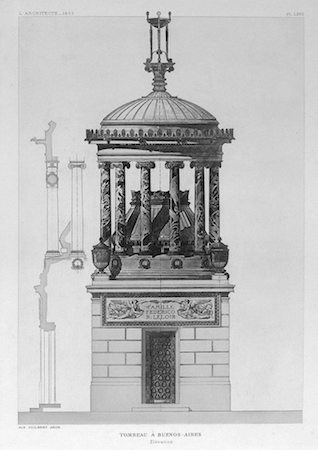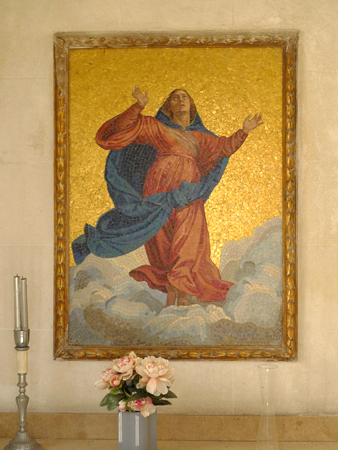
Hidden mosiac inside the Croci family vault. Never hurts to repeat good advice: look inside mausoleums! You never know what you’ll discover.
Leave a Comment
Hidden mosiac inside the Croci family vault. Never hurts to repeat good advice: look inside mausoleums! You never know what you’ll discover.
Leave a Comment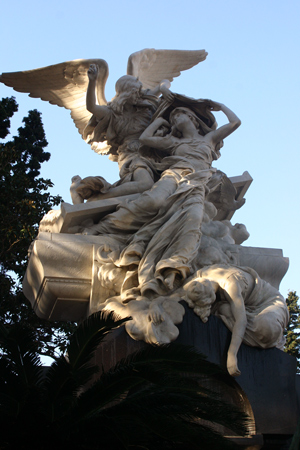
José Clemente Paz founded the newspaper “La Prensa” in 1869 with a commitment to independent journalism & respect for the private individual behind the public persona. Its circulation & influence became so great that there were foreign correspondents in most major capital cities… something uncommon for the 1870s.
Paz used his influence to become a representative, then senator, in Congress. He even served as the Argentine ambassador to France & Spain. He most likely had his eyes set on the presidency but never quite made it. “La Prensa” fell on hard times when Perón came to power. Criticizing the populist hero, “La Prensa” was conveniently shut down. It resumed operation after the Perón years, but readership had shifted elsewhere. Even though it continues to operate, circulation is very limited. However, the Paz legacy lives on in Buenos Aires: his gigantic Plaza San Martín mansion is now used as the Círculo Militar & the Avenida de Mayo newspaper office serves as a city cultural center.
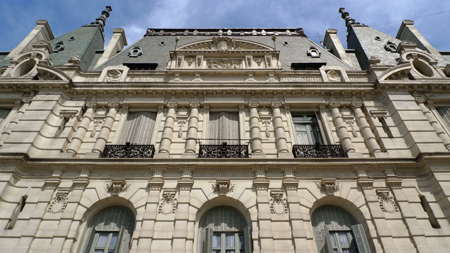
The Paz family tomb is one of the highlights of Recoleta Cemetery. Two larger-than-life angels at ground level focus their attention above. The left angel reaches to the sculpture group while her body wraps around a giant anchor, but there’s no nautical meaning here. The anchor was used as a Christian symbol until around 400 A.D. & bears the signature of the tomb’s artist: Jules Felix Coutan (1904). He was the most important sculptor of the era… head of the École de Beaux Arts in Paris & commissioned for works on the French National Library as well as Grand Central Station in New York City. Paz definitely had some good connections:
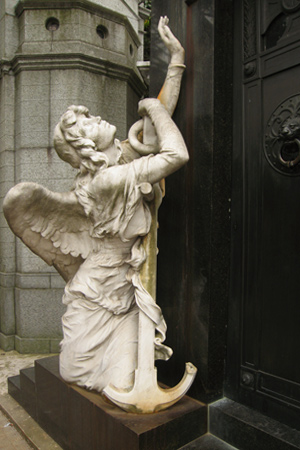
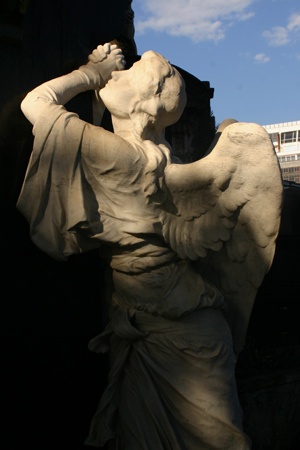
Thanks to the angels below, the viewer’s eye is drawn to the sculptures above, best seen from a distance. A woman lies, collapsed, with an oil lamp in her hand. No flame comes from the lamp, representing death. Above her is an enormous open casket with a dove escaping. Some people link that bird with peace, but others suggest that it is the actual moment of death. The soul literally rises out of the casket to be greeted by a third angel. Two actions are present here: the covering the soul with a cloth as protection & pointing to the direction where they are going… up & away:
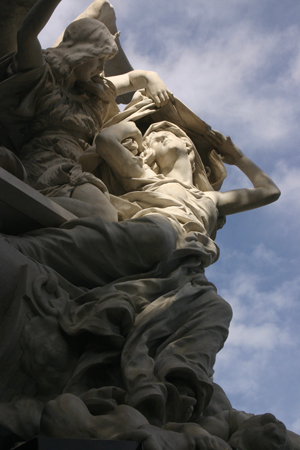
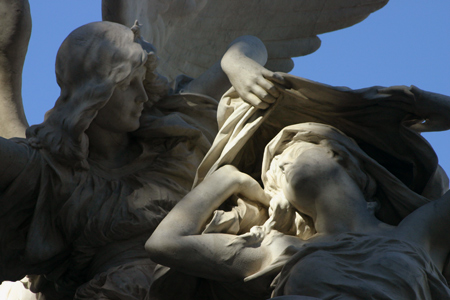
Whether looking at this image religiously or not, we should all hope our passing generates such beauty & peace.
5 Comments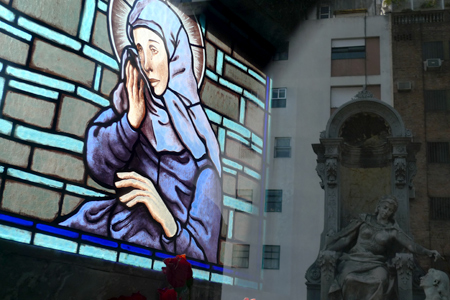
Found inside the Familia Ovidio Giménez-Ema Korek tomb. Previous reflection photos can be found here & here. Sally Blake sent me a heads-up earlier this year about Julie-Anne Cosgrove who takes beautiful photos in the same vein. Check out her blog!!
Leave a Comment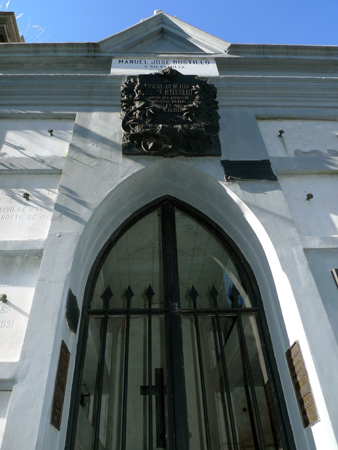
With a long history of military participation in Argentina, Bustillo family members saw action in the 1806 British invasion, the fight for independence under General José de San Martín, the struggle for national organization between Urquiza & Rosas, & the War of the Triple Alliance. But it was Alejandro Bustillo who made the most lasting contribution to Argentina as an architect for some of its largest cities.
Born in 1889, Alejandro graduated with a degree in architecture in 1914… no doubt inspired by his uncle, Eduardo Madero. His early works were mainly private dwellings but by the 1930s, Bustillo produced dozens of major buildings seemingly without stopping for breath.
Among some of his best known constructions are the hotel-casino in Mar del Plata (1938), headquarters for the Banco de la Nación in Buenos Aires (1940), & the cathedral & Hotel Llao Llao in Bariloche (1938-40). All are pictured below:
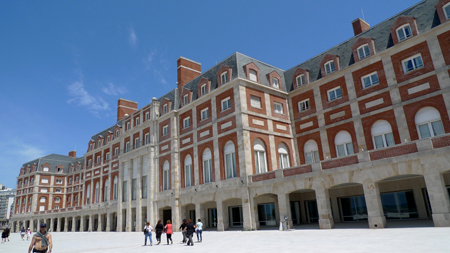
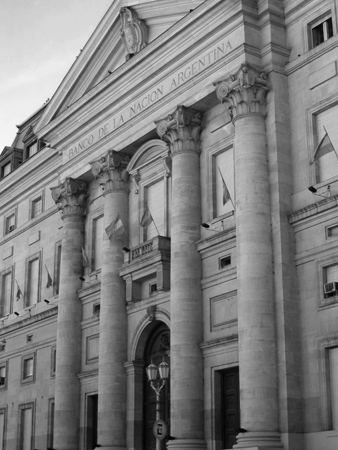
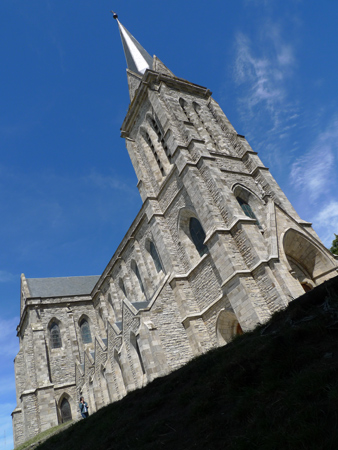
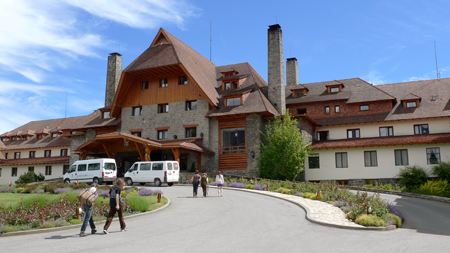
Bustillo claimed to be influenced by Albert Speer, chief architect for Hitler… evident in the scale of his larger works. Considered one of the great 20th-century architects of Argentina, Alejandro Bustillo passed away in 1982 at the age of 93.
The family tomb is the oldest in Recoleta Cemetery. At a time when graves were typically for individuals (remember Remedios de Escalada has the oldest single plot), the Bustillo family was one of the first to build a mausoleum. It dates from 1823, constructed only one year after the cemetery’s opening:
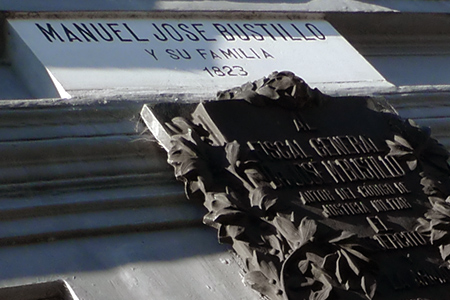
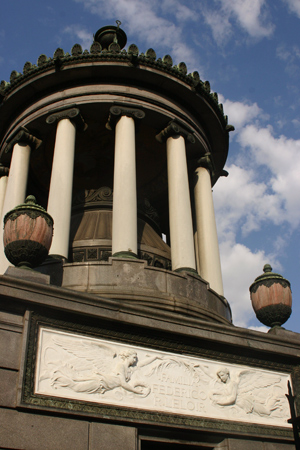
Family founder Federico Augusto Rufino Leloir Bernal possessed a large land fortune along the southern coast of the Buenos Aires Province. He & his wife traveled to Paris in 1906 for medical reasons, but unfortunately Federico passed away. One week later, Luis Federico was born… the last of five siblings.
Luis Federico Leloir without doubt became the most famous member of the family. His 1949 discoveries in biochemisty led to a Nobel Prize in 1970. Leloir & his team were the first to identify nucleotide sugars which are instrumental in accumulating energy stores in the human body:
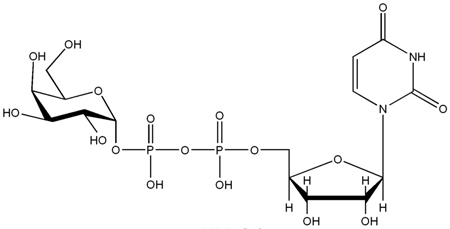
Ten years after his initial discovery, Leloir found that nucleotide sugars are responsible for transferring sugars to molecules which grow to an immense size & become glycogen… seemingly endless chains of glucose waiting to be broken down to provide energy:
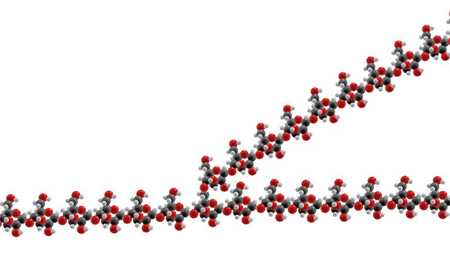
As his studies progressed, Leloir proved that human biosynthesis is not merely a reversal of breakdown, as had been assumed earlier. On the contrary, they are distinct processes. Leloir’s principle was also shown to be valid with proteins and nucleic acids, leading to discoveries about organ donor rejection & lactose intolerance. Leloir passed away in 1987, five years after receiving a cross from the French Legion of Honor.
The family vault, built in 1906 with opulent Art Nouveau decoration, is one of the tallest in the cemetery:
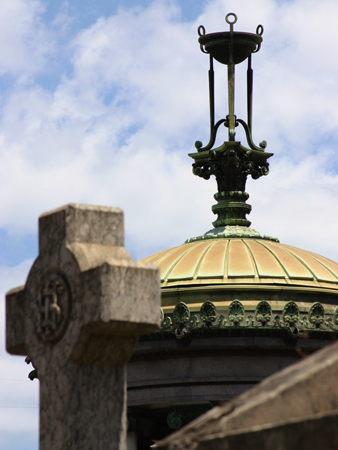
What distinguishes the mausoleum are its mosaics. The underneath side of the dome is decorated with an image of Christ surrounded by angels. The mosaic can be seen from the interior of the mausoleum through a skylight… Christ appears dramatically overhead:
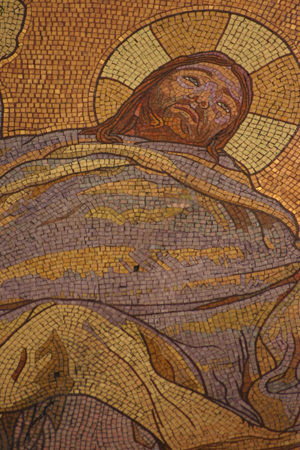
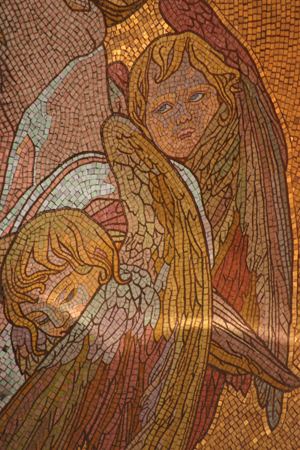
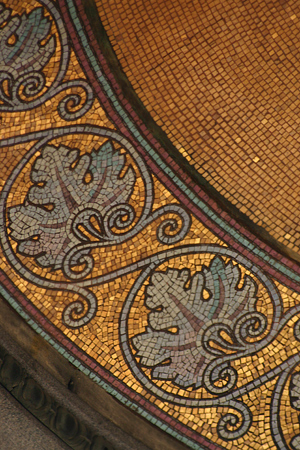
The interior is also lavishly decorated with mosaics & Art Nouveau imagery… press your nose to the glass for a look inside:
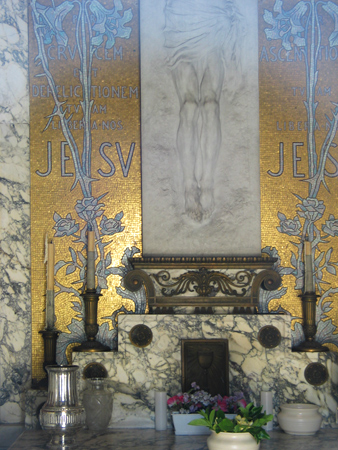
Leloir also has one other claim to fame: the invention of a condiment. He came up with salsa golf at the Golf Club at the seaside resort of Mar del Plata. Basically a combination of mayonnaise & ketchup, it remains a popular, non-spicy alternative to cocktail sauce & a key ingredient of a local salad made with hearts of palm.
Like Art Nouveau? Learn about the architects of the era, their individual styles & what makes Art Nouveau in Buenos Aires so unique with a 33-page guide from our sister site, Endless Mile.
Update (27 Aug 2022): The Centro de Documentación e Investigación de la Arquitectura Pública (CeDIAP) has made thousands of images available online that could only be consulted previously by appointment. Among these are three blueprints for the Leloir family museum by French architect Albert Desiré Guilbert. For more of his works in Buenos Aires, see the comprehensive blog by Alejandro Machado, Arquitectos Franceses en Argentina.
